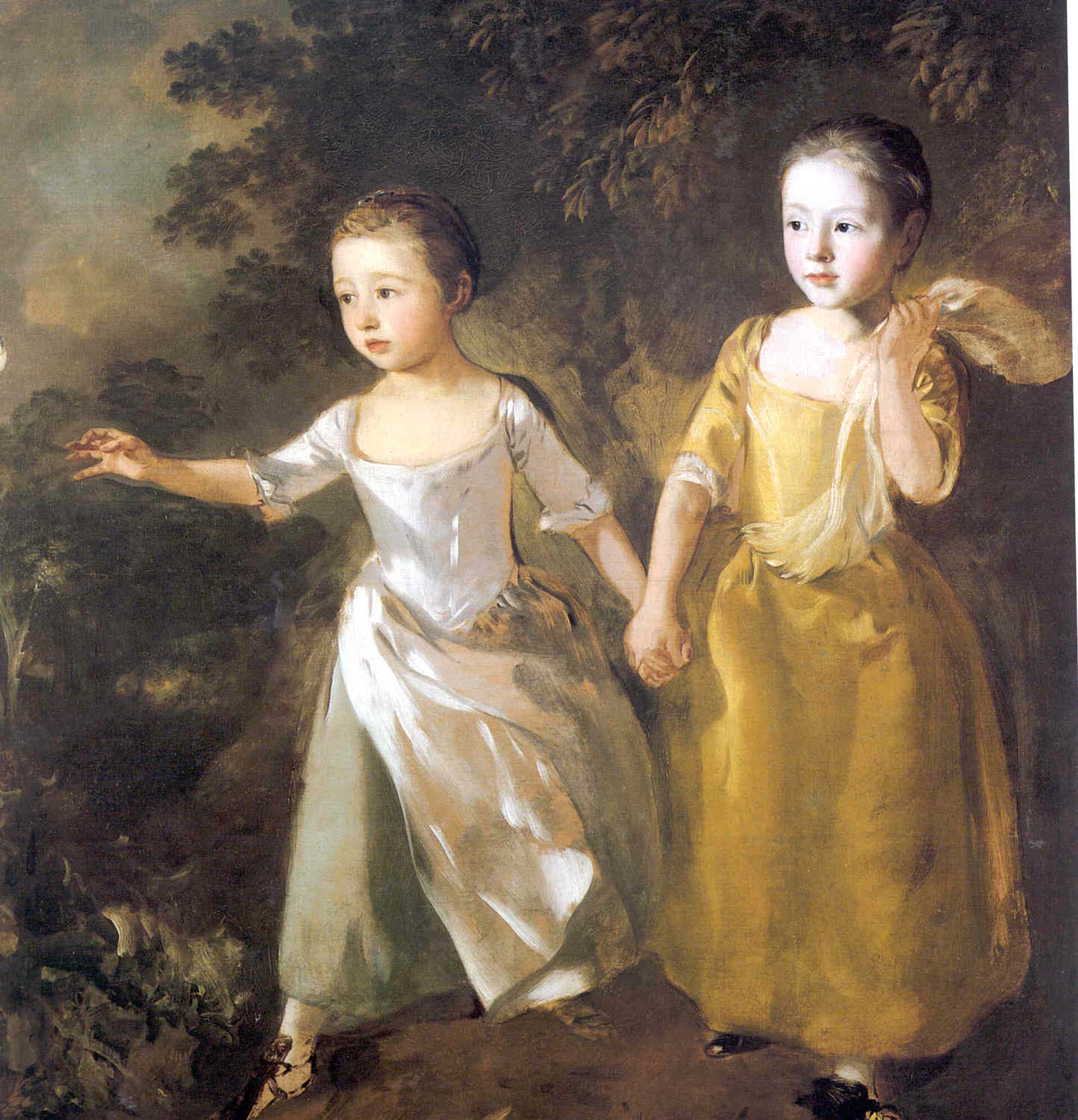Great Works: The Painter's Daughters Chasing a Butterfly (c1756) by Thomas Gainsborough
National Gallery, London

Your support helps us to tell the story
From reproductive rights to climate change to Big Tech, The Independent is on the ground when the story is developing. Whether it's investigating the financials of Elon Musk's pro-Trump PAC or producing our latest documentary, 'The A Word', which shines a light on the American women fighting for reproductive rights, we know how important it is to parse out the facts from the messaging.
At such a critical moment in US history, we need reporters on the ground. Your donation allows us to keep sending journalists to speak to both sides of the story.
The Independent is trusted by Americans across the entire political spectrum. And unlike many other quality news outlets, we choose not to lock Americans out of our reporting and analysis with paywalls. We believe quality journalism should be available to everyone, paid for by those who can afford it.
Your support makes all the difference.Some words have a long and fascinating history. Take the word sensibility, for example. In 1755, which would have been about a year before Gainsborough painted this tenderly anxious portrait of his two daughters Mary (b.1750) and Margaret (b.1751), Samuel Johnson published his great dictionary. In that book the word sensibility is defined by a range of meanings, from sensibleness and sensation through to delicacy.
When Laurence Sterne used the word in 1768, the meaning seems to be very close to what, we speculate, Gainsborough's own feelings might have been towards his daughters when he painted them here. This is what Sterne wrote: "Dear Sensibility! Source... unexhausted of all that's precious in our joys, or costly in our sorrows." In short, Sterne seems to mean something close to the raw ability to feel. And that is, surely, the essence of this painting: a feeling reaching out to that which was most vulnerable and most precious in a youngish father's life.
In some respects, Gainsborough was a lucky man when it came to child models. He could minutely observe his own growing offspring, with wonder, tenderness and any parent's natural apprehensiveness as to what might lie ahead for beings so fragile and so unformed. Hogarth was not so fortunate. He was childless. He had to observe from afar. Gainsborough, while not being in any way exploitative, took full advantage of the fact that he had lovely, paintable daughters. He tricked them out in unusual costumes, for example – about four years after he painted the pair that you can see on this page, he dressed Margaret as a slightly weary and melancholy gleaner in a cornfield brooded over by rather threatening clouds, in the act of dividing her gleanings. You can see that painting at the Ashmolean.
In this painting, you can almost feel how Gainsborough's heart goes out to his girls in their beautifully contrived predicament. They are quite different from each other in character. Though separated by little more than a year in age, Mary (right) possesses a coolness, a poise, a wisely mature sense of restraint. She looks on with dispassion as her younger sister lunges impulsively towards the butterfly that is settling on the thistle. The message is simple: unbeknownst to herself, this child is about to do herself harm. What a range of meanings seems to be clustered about this double-portrait.
The children are emerging from a dark wood, Dante's "selva oscura". In the Inferno, it is the poet himself, in the middle of his life who finds himself in that wood. Here it is two children who are emblems of light emerging from darkness – which puts us in mind of the first chapter of the Gospel According to St John. The child is about to seize a butterlfy, which is perhaps an emblem of the fragility and evanescence of life. She cannot but do so. It is in the nature of childhood to rush impulsively into the future, heedless of danger.
Only the painter is aware of the danger – though perhaps the elder daughter, edging towards maturity herself, apprehends something. Life is a thistle that will need to be grasped. It is almost a dance movement that these two children are engaged in – one puts her right foot out, the other the left, as they move towards us in a pas de deux. It has a touch of the stage, as does the beauty of their faces, their complexions that remind us of the fragile delicacy of a wren's egg. All to be spoiled by time's ravages.
About the artist: Thomas Gainsborough (1727-88)
Suffolk-born Thomas Gainsborough became one of the leading portrait painters of Europe of his day, having worked through the influence of artists as various as Watteau and Ruisdael. His landscapes often tend towards idealisation, but his portraits of grand, spirited, heavily bedizened women have a tang and a rude authenticity about them that both amuses and exhilarates. Even his great rival Sir Joshua Reynolds acknowledged his masterfulness.
Join our commenting forum
Join thought-provoking conversations, follow other Independent readers and see their replies
Comments